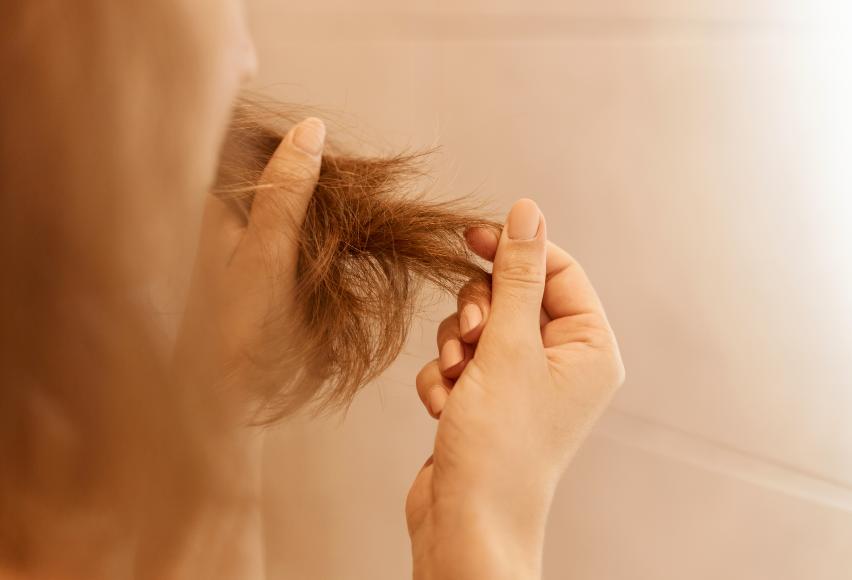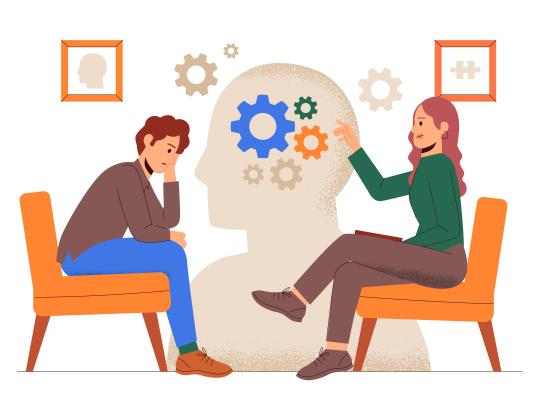Cue-Exposure and Response Prevention (CERP) And Hair Pulling

Online test
Find out the severity of your symptoms with this free online test
Cognitive-behavioral treatment in various forms has long been the preferred treatment modality for trichotillomania (hair-pulling) and other obsessive-compulsive related disorders. These CBT-based approaches generally fall into one of two categories: traditional behavior interventions and augmenting strategies.
Traditional behavior interventions are aimed at reducing or stopping an undesired behavior like hair pulling or skin picking. These widely used interventions enjoy considerable empirical support. Two of the most well-known include:
- Habit Reversal Training (HRT)
- Stimulus Control (SC)
Augmenting strategies, sometimes used alone or in tandem with traditional interventions, are aimed at addressing internal states including motivations, urges, and emotions related to the behavior. Some of the most often used include:
- Dialectical Behavior Therapy (DBT)
- Acceptance and Commitment Therapy (ACT)
- Cue Exposure and Response Prevention (CERP)
Habit Reversal Training (HRT), a traditional behavioral intervention, has long been considered the gold standard in treating trichotillomania (hair-pulling). This approach involves increasing awareness of triggers or cues and then learning to replace the undesired behavior with a competing response. An additional intervention known as Stimulus Control (SC) is often combined with HRT. Stimulus control is a method that seeks to eliminate external triggers. For example, wearing gloves or removing tools used to pick or pull. HRT-SC has been shown to be quite effective in reducing pulling behavior for many people, although relapse is not uncommon.
When HRT is combined with augmenting strategies such as DBT or ACT, research has found that there is substantial symptom relief as well as better long-term maintenance. However, there has been little attention given to HRT-CERP. Could HRT-CERP offer another strategy for treating chronic hair pulling and OCD-related disorders? In what is thought to be the first study to compare the long-term efficacy of HRT-SC and HRT-CERP, researchers seek to answer that question.
What Is Exposure?
Exposure techniques are used to help a person confront, acknowledge, or be in proximity to something that creates fear or distress. A specific kind of exposure strategy, Exposure and Response Prevention (ERP) is a highly effective treatment intervention for obsessive-compulsive disorder (OCD) and related disorders.
ERP is based on a fear-avoidance model and helps people gradually confront their anxiety-provoking stimuli (trigger) without reacting with their anxiety-reducing compulsion. By eliminating the behavior rituals and avoidance behaviors, people can learn how to tolerate distressing feelings without resorting to counterproductive behaviors. They learn how to challenge their existing fears, distortions in thinking, and responses. In short, instead of avoiding anxiety-provoking situations (exposure), people learn to not respond (response prevention) to the trigger.
CERP is similar to ERP in that both seek to reduce or extinguish unwanted behaviors. Unlike ERP, however, CERP seeks to have the person confront their urges (not the trigger) to perform anxiety-reducing behaviors such as hair pulling or skin picking. By weakening the relationship between the cue (trigger), the urge, and the behavior (pulling, picking), the behavior is not reinforced and extinguishes over time.
CERP has been used to successfully treat impulse control disorders, such as disordered eating and addictions. Hair pulling and skin picking are thought to involve problems with inhibition and impulse control, lending support to the idea that exposure may be helpful. However, empirical support for its efficacy in treating hair pulling or skin picking is limited but promising. One study found that the use of CERP and HRT successfully helped reduce symptoms and that treatment gains were maintained at a 4-year follow-up.
HRT – the Gold Standard
HRT, often combined with SC or other augmenting treatment, has demonstrated its effectiveness over the years and is often referred to as the gold standard for treating hair pulling and other BFRBs. However, treatment gains are not always long-lasting, and relapses are common.
HRT works by helping people reduce unwanted repetitive behaviors like hair pulling by becoming more aware of the cues that the behavior is about to happen and replacing those unwanted behaviors with new more desirable ones. OCD-related disorders like hair pulling and skin picking seem to involve problems with inhibition and impulse control with the behaviors aimed more at relieving emotional distress. For OCD, HRT is sometimes combined with ERP.
Results Exposed
The study results were surprising. It was hypothesized that due to the exposure component, HRT-CERP would result in longer maintenance of treatment gains than HRT-SC. CERP should reduce trigger avoidance or extinguish the pulling or picking behaviors.
Findings supported both HRT-SC and HRT-CERP as effective interventions for the treatment of hair pulling and skin picking. Both groups reported a reduction in symptoms of pulling or picking. There were no significant differences between treatment outcomes at 6-month and 12-month follow-ups on any outcome measure.
The reason for this finding is unclear. The researcher suggests that one issue may be the duration of the study. This study took place over a 4-week period and included 4 sessions. It is noted that the one previous study of HRT-CERP resulting in 4-year maintenance took place over one year and included 23 sessions. It is speculated that a longer period of intervention, additional sessions, or booster sessions may have produced HRT-CERP results more in line with what was previously found.
These results support the use of CERP as part of an HRT-enhanced treatment intervention for hair pulling and skin picking disorders. Enhanced approaches that address both behavioral and cognitive dynamics seem to be helpful for symptom management and support greater retention of treatment gains.
Even when results are not what you expect, research like this expands our knowledge of how various interventions work and their potential for bringing symptom relief to those living with disorders like hair pulling. While research continues, there is renewed hope for innovative and personalized treatments that work.
References
1. Hasler, G. (2018). Long-term efficacy of exposure-based intervention compared to stimulus control as a treatment for hair-pulling disorder and skin-picking disorder (Master's thesis, Reykjavik, Iceland). Retrieved from https://skemman.is/bitstream/1946/30597/1/Gu%C3%B0r%C3%BAnHasler_Lokaritgerd.pdf
2. Hezel, D. M., & Simpson, H. B. (2019). Exposure and response prevention for obsessive-compulsive disorder: A review and new directions. Indian journal of psychiatry, 61(Suppl 1), S85–S92. https://www.ncbi.nlm.nih.gov/pmc/articles/PMC6343408/
3. Hofmann, S. G., Asnaani, A., Vonk, I. J., Sawyer, A. T., & Fang, A. (2012). The efficacy of cognitive behavioral therapy: A review of meta-analyses. Cognitive Therapy and Research, 36, 427-440. doi:10.1007/s10608-012-9476-1
4. Brennan, E., Francazio, S., Gunstad, J., & Flessner, C. (2016). Inhibitory Control in Pediatric Trichotillomania (Hair Pulling Disorder): The Importance of Controlling for Age and Symptoms of Inattention and Hyperactivity. Child psychiatry and human development, 47(2), 173–182. https://doi.org/10.1007/s10578-015-0554-y
5. Javidi, Z., Battersby, M., & Forbes, A. (2007). A case study of trichotillomania with Social phobia: Treatment and 4-year follow-up using cognitive–behaviour therapy. Behaviour Change, 24, 231-243. doi:10.1375/bech.24.4.231
Online test
Find out the severity of your symptoms with this free online test
Start your journey with TrichStop
Take control of your life and find freedom from hair pulling through professional therapy and evidence-based behavioral techniques.
Start Now


